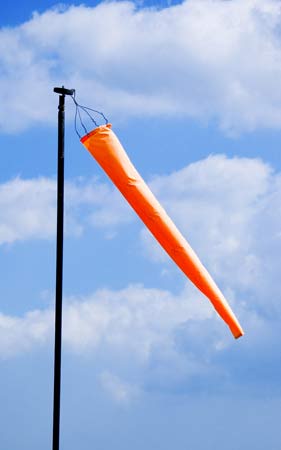Serious Climate Change: Winds Blew in Reverse During Last Ice Age

In one of the most stark illustrations of how a changing climate can have regional effects, scientists have learned that winds over North America have done a complete 180 since the time of the last Ice Age several thousand years ago.
Winter blizzards and spring thunderstorms today are usually fueled by moisture-laden winds blowing in from the West Coast.
“In this study, we found evidence that during the last glacial period, about 14,000 to 36,000 years ago, the prevailing wind in this zone was easterly, and marine moisture came predominantly from the East Coast,” said lead study author Xiahong Feng of Dartmouth College.”
The findings were detailed today in the online edition of the journal Geology.
Changing climate
These changes in wind direction were the result of global climate change, which can alter circulation patterns in the atmosphere, Feng explained. Changes in wind patterns can in turn cause changes in temperature and precipitation patterns, which are the measurements typically used to study past climates.
“Climate change involves interactions among temperature, precipitation and wind, but until now, research has rarely been able to observe or confirm prehistoric winds and their continental-scale patterns,” Feng said.
Sign up for the Live Science daily newsletter now
Get the world’s most fascinating discoveries delivered straight to your inbox.
The researchers examined cellulose from ancient wood samples recovered from the mid-latitudes of North America (40-50 degrees N). The changes in the compositions of oxygen and hydrogen isotopes across the continent gave the researchers a picture of the distribution of moisture during the glacial period. While modern samples show high levels of moisture on both coasts, the ancient samples surprisingly showed high levels on the East Coast that steadily decreased to the West Coast.
“We didn’t expect to see a whole different pattern,” co-author Eric Posmentier told LiveScience.
Altered jet stream
Feng hypothesizes that the Laurentide Ice Sheet, which covered a large area of North America during the Ice Age, intensified winds swirling around the North Pole. This intensification caused the jet stream, along which many storms tend to track, to dip further south than does today and the weak polar easterlies above it were pushed down over the mid-latitudes of North America.
Essentially, the wind patterns of today “got squished down toward the equator,” Posmentier said.
These changes in wind direction in turn changed precipitation patterns. For example, the Pacific Northwest was found to be much drier than it is today, which earlier studies of vegetation in that region have also shown.
Feng hopes that the methods her team used in this study can be used to better understand climate interactions and to formulate better models of future climate change.

Andrea Thompson is an associate editor at Scientific American, where she covers sustainability, energy and the environment. Prior to that, she was a senior writer covering climate science at Climate Central and a reporter and editor at Live Science, where she primarily covered Earth science and the environment. She holds a graduate degree in science health and environmental reporting from New York University, as well as a bachelor of science and and masters of science in atmospheric chemistry from the Georgia Institute of Technology.










